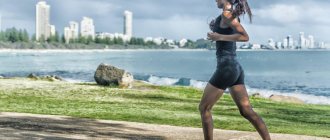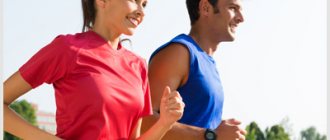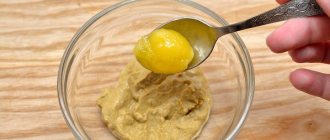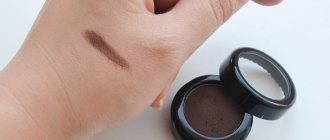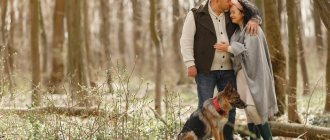Every person has a desire to be physically active until old age. Therefore, many are interested in how not only to increase longevity, but also to live a life without any special diseases . It is known that people who engage in moderate exercise live much longer than those who lead a sedentary lifestyle.
It's never too late to start exercising. The main thing is to do this regularly and select feasible exercises. As an option, walking can be used, which has a positive effect on the functioning of many body systems.
First workout: 15-minute brisk walk
A daily 15-minute walk will help burn at least 50 kcal. Experts say that these 15 minutes and 50 kcal can be the decisive factor in the appearance of extra centimeters on the waist (something like a small pebble that can trigger an avalanche). Another plus: after such a walk you will not feel hungry, as you do after a standard workout. And you don’t need to close the protein-carbohydrate window either. At least that's what researchers from Loughborough University in the UK say.
Cole recommends walking at a pace of 5 kilometers per hour and avoiding stopping if possible. Gradually, this walk can be increased to 45 minutes a day. As an additional exercise that can be done on the go, it is suggested to squeeze the buttocks. This way you will kill two birds with one stone: you will burn extra calories and make your butt firm and round.
The benefits and harms of long walking for women for weight loss
Nutritionists recommend going on such a walk not on an empty stomach, but after a carbohydrate meal, in which at least 70% should be complex carbohydrates. This way the body will have a place to get energy from during the first 15 minutes of training. In the next 15 minutes, glycogen, a stored reserve of a special form of glucose, will begin to process glycogen to replenish energy costs. And only after half an hour of walking, fat deposits begin to be “burned.”
Long walking helps women lose weight, accompanied by:
- removal of waste and radionuclides;
- increased tension in the abdominal muscles;
- increased local temperature in the thighs and buttocks;
- removal of excess liquid.
Read: Benefits of brisk walking
To lose weight, by the way, you need to drink a lot of water, for example, according to the formula - 30 ml per 1 kg of weight.
It is important to note that walking for a long time is completely unhealthy for women and will only bring metabolic disorders instead of weight loss if you do this in a heavily polluted urban atmosphere on a hot, stuffy day.
Video on the topic:
Second workout: 40-minute relaxation walk
Research results confirm the beneficial effects of walking on our emotional state. Even 10 minutes in the fresh air reduces anxiety and improves your mood.
In his plan, Cole suggests a 40-minute meditation walk in which you can silently count “one, two” every time your foot touches the ground. This way you will enter a certain pace and not only burn calories, but also clear your mind of information garbage. You can do this in silence, or you can make a playlist with your favorite songs and enjoy them while walking.
The variety of walking and its effect on health
Hiking can help a person significantly improve their health and increase their longevity. Their different types will be discussed here.
On the spot
Walking in place is an option for people who are unable to walk outside or use a treadmill. When performing this exercise, you must adhere to the following rules:
- Do not restrict your movements; swing your arms vigorously while moving your legs.
- It is better to raise your knees high.
You need to step on your toes, not your heels.- When performing the exercise, you should monitor your well-being. Walking in place can be used in extreme cases, since walking over long distances is still more beneficial.
On the stairs
Walking up the stairs can also be a temporary replacement for street walking, for example, if it’s raining outside.
You need to monitor the pace and duration of the lesson , start with 2-4 flights, this is 1-2 floors. After which you need to rest until the rhythm stabilizes, then continue climbing. You need to step on each step with your toe.
In the future it will be possible to step over the step. But this is only after you manage to climb to the top floor without shortness of breath. Although it is recommended to walk up the stairs until you get tired, you shouldn’t overdo it either.
ATTENTION! This type of walking perfectly trains the respiratory system and strengthens the leg muscles.
On the sand
You need to choose places where there is no foreign debris. In this case, walking on sand will bring positive results. This kind of walking strengthens the nervous system and helps cope with stress. Both regular and beach sand are suitable for walking.
Uphill
Walking uphill involves a lot of physical effort, so you should consult your doctor first. Although even a person who rarely exercises can master it. The benefits of such walking are as follows:
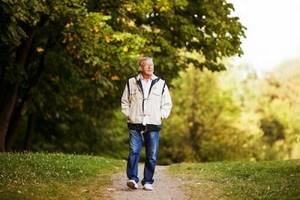
The body's endurance increases.- All-round physical development is observed.
- The work of the heart muscle and the entire circulatory system is normalized.
- Unnecessary fats are burned.
- By increasing lung volume, the functioning of the respiratory system improves.
Barefoot
To know the benefits of walking barefoot, you need to monitor what is happening in the body:
- The immune system is activated.
- You feel a surge of energy.
- Night sleep is restored, apathy and stress disappear.
- The central nervous system is strengthened.
- By stabilizing blood pressure, the functioning of the cardiovascular system improves.
- By strengthening the immune system, skin rashes and inflammations disappear.
- Visual acuity increases.
- The leg muscles are strengthened.
With like-minded people
Walking is good because it gives you the opportunity to communicate with your companion. Therefore, it is advisable to go not alone, but with like-minded people. This is especially important for older people; sometimes they experience a lack of communication.
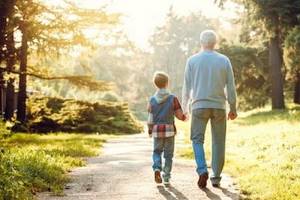
This improves overall mood and mental balance. The stressful state goes away, depression is prevented.
Thus, walking together helps older people recover faster not only physically, but also psychologically.
Workout Three: 30-Minute Fat Burning Walk + Butt Strengthening
To make our legs and buttocks work a little more actively than during normal walking, it is not at all necessary to run or walk uphill. For example, increasing your stride length will put more stress on your quadriceps. You can alternate one minute of brisk walking with one minute of brisk walking.
Your walking workout might look like this:
- 1–4 - Walk at a moderate pace as a warm-up.
- 5–9 - Alternate between one minute of walking at a wide pace and one minute of walking at a moderate pace. Try to maintain your posture and look forward, not at your feet.
- 10–13 - alternate between one minute of walking at a moderate pace and one minute of walking with lunges. Take a wide step forward with your right leg, the angle at the knee of the supporting leg is 90 degrees, the left leg is bent, the knee almost touches the ground. To move your left leg forward, you don’t have to straighten completely, leaving your legs half-bent.
- 14–17 - Switch again between one minute of walking at a moderate pace and one minute of walking at a brisk pace.
- 18–21
- Alternate one minute of walking at a moderate pace with one minute of walking with lunges. - 22—30 - Switch between one minute of walking at a moderate pace with one minute of walking at a brisk pace for four minutes. Then, for the next four minutes, alternate between a minute of moderate walking and a minute of lunge walking. Use the remaining minute to cool down - take a leisurely walk.
Workout four: 20-40 minute intervals
If you alternate walking with running, in 20 minutes you can burn 147 kcal instead of 70 kcal, that is, twice as much. Tempting, isn't it? To do this, you can break a 20- or 40-minute walk into 5-minute segments and alternate walking with light jogging.
- 1–5
- walking at a moderate pace to warm up. - 6–10 - Repeat the following cycle five times: 20 seconds of walking, 20 seconds of jogging, 20 seconds of maximum acceleration.
- 11–12 - walking at an easy pace.
- 13–17 - repeat the cycle: 20 seconds of walking, 20 seconds of jogging, 20 seconds of maximum acceleration.
- 18–20 - Finish the workout by walking at an easy pace.
Additional exercises
Cole advises his clients to add additional walking exercises to complete their workout, at least three times a week. These include:
- Plie squats. Works the buttocks, inner thighs and hamstrings. It is recommended to perform two sets of 10 repetitions each.
- Raising on your toes. Stand straight, feet together, toes turned outward at an angle of 45 degrees. Take a small step to the right and rise onto your toes while squeezing your glutes. Return to the starting position and perform the same step to the left. This is one repetition. It is recommended to perform two sets of 10 repetitions each.
- Body rotations. Stand straight, feet slightly wider than shoulder-width apart, arms extended to the sides. Start turning from side to side, while fixing your lower body (your pelvis should not twist with your body). It is recommended to perform 20 repetitions.
- Tilts towards the feet. The starting position is the same as when turning the body. Turn your body to the left as much as possible, bend over and try to touch your left foot with your right hand. The left arm is extended upward. Return to the starting position and repeat the tilt to the right side. It is recommended to perform two sets of 10 repetitions.
- Bent squats. Stand straight, feet slightly wider than shoulder-width apart, toes turned outward at an angle of 45 degrees, hands clasped behind your head. Perform a squat and, in the lower position, lean to the right, pointing your right elbow towards your right knee. Straighten up and return to the starting position. Repeat the same on the left side. It is recommended to perform 20 repetitions (10 bends in each direction).
- Taking the leg back. Stand straight, arms extended forward. Move your right leg back as far as possible, while maintaining a slight forward lean to maintain balance. Hold your leg up for just a few seconds, then lower it. As soon as your foot touches the floor, take it back again. It is recommended to perform two sets of 10 repetitions on each leg.
- Leg circles. Stand straight, feet shoulder-width apart, arms out to the sides. Raise your right leg off the floor and move it slightly forward. Perform 10 circular movements with your right leg in a clockwise direction. Then make 10 circular movements with your left leg. It is recommended to perform two sets of 10 repetitions on each leg.
These exercises are recommended, but if you want to get maximum results, it is better to include them in your training on an ongoing basis.
Fast walking is the best sport for healthy longevity
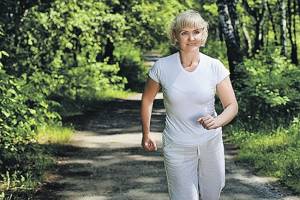
Forward to long youth! Health formula - walk 30 minutes a day
As Veronika Skvortsova, Minister of Health of the Russian Federation, said in an interview with KP (read soon on the website kp.ru), at least 60% of the contribution to human health and longevity comes from lifestyle. That is, the characteristics of nutrition, motor mode, how often and how deeply a person experiences stress. At the same time, scientists have long been engaged in clarifying the question: what type of physical activity will give the best results in older age? So that the exercises are suitable for older people, effective and at the same time safe. Here's what the data was obtained from a recent large-scale study.
Scientists from the University of Leicester (Leicester, UK), using special computer programs, calculated the relationship between various parameters of a person’s physical fitness and his life expectancy. In particular, we took into account walking speed, body mass index, and arm strength (we measured hand compression strength with a dynamometer). For calculations, information from the UK Biobank from 2006 to 2020 was used. Almost half a million — 474,919 volunteers — entrusted their personal data to researchers.
After analyzing all the information, the computer produced a pattern: those who walk the fastest live the longest. At the same time, the participants assessed their walking speed in the questionnaire independently: high, medium or low. The relationship between weight, arm strength and life expectancy turned out to be much less pronounced, the authors of the scientific work noted.
Russian gerontological experts support the conclusions of their foreign colleagues. Of course, reasonable physical activity is one of the most important factors for healthy and active longevity. And brisk walking (called cardio walking) is also the safest form of exercise. Cardiologists explain: you need to walk at the fastest possible pace, but so that there is no shortness of breath. The ideal is at least 30 minutes of intense walking every day, said the head of the National Medical Research Center for Cardiology of the Ministry of Health, corresponding member of the Russian Academy of Sciences, Professor Sergei Boytsov in one of his speeches. This type of walking improves blood flow in all organs, including the brain, which can reduce the risk of Alzheimer's disease and dementia. In addition, during fast walking, vascular tone improves and stress hormones accumulated during the day are more quickly “utilized” (if you walk before bed).
Country joys for health, long life and good mood.
Nutrition: less salt, more vegetables
Now that seasonal vegetables and fruits have begun to ripen in dachas, it’s time to follow nutritional recommendations for healthy longevity. Professor Boytsov calls for eating at least 400 grams of vegetables and fruits per day. This is in accordance with recognized international recommendations. Experts from the World Health Organization advise trying to include vegetables in every meal and using them for snacks. And also diversify your vegetable diet as much as possible. In our country, for example, in addition to traditional cucumbers and tomatoes, you can go all out on pumpkin, rich in valuable substances, turnips, radishes, and cauliflower.
It is also important to reduce the amount of sugar in your diet. For older people, when the incidence of diabetes or the risk of developing it increases, this rule is especially relevant. The WHO recommendation is no more than 25 g of sugar per day, which is 6 teaspoons, including sugar in all foods and drinks. To comply with this standard, experts advise limiting store-bought juices, soda and other drinks - the sugar content in them, as they say, is off the charts. It is better to prepare homemade compote, fruit juice, tea with honey and lemon, etc. Instead of store-bought confectionery, which often also contains harmful trans fats, try to eat fruits and dried fruits, homemade jams.
And a real headache for doctors in our country, as in many countries around the world, is excess salt. In older age, this leads to the progression of hypertension, kidney disease, and ultimately an increase in heart attacks and strokes.
THIS WILL BE USEFUL
Advice from a minister and a neurologist
Fifth-generation physician, Minister of Health and neurologist Veronika Skvortsova shared advice for good health in the “OK in touch” program organized by the Odnoklassniki social network. It is recommended to do these simple exercises every morning before getting out of bed.
— Lying on the pillow, we very smoothly turn our head to the right - as far as we can, as far as we can, hold it for several seconds. Then, in the same way, smoothly, to the left all the way. Then we lean forward, trying to touch our chin to our neck, then back (pressing our head into the pillow). This is an excellent exercise for relaxation, training neck muscles and preventing osteochondrosis.
And if you continue to work and the work involves spending a long time at the computer, then Dr. Skvortsova advises periodically (every one and a half to two hours) to do a simple but most effective exercise: move your gaze from a close object to a distant one. Or stick a dot on the window and look either at it or at an object in the distance outside the window. By the way, this advice will be useful in case of eye fatigue and during other activities - for example, sewing.
IMPORTANT
In 2020 - 2024, thanks to the national project “Demography”, regional programs aimed at improving health, increasing the period of active aging and healthy life expectancy will operate in all 85 regions of the country. In addition, a system will be formed to motivate citizens to lead a healthy lifestyle, including healthy eating, protection from tobacco smoke, and reducing alcohol consumption.
